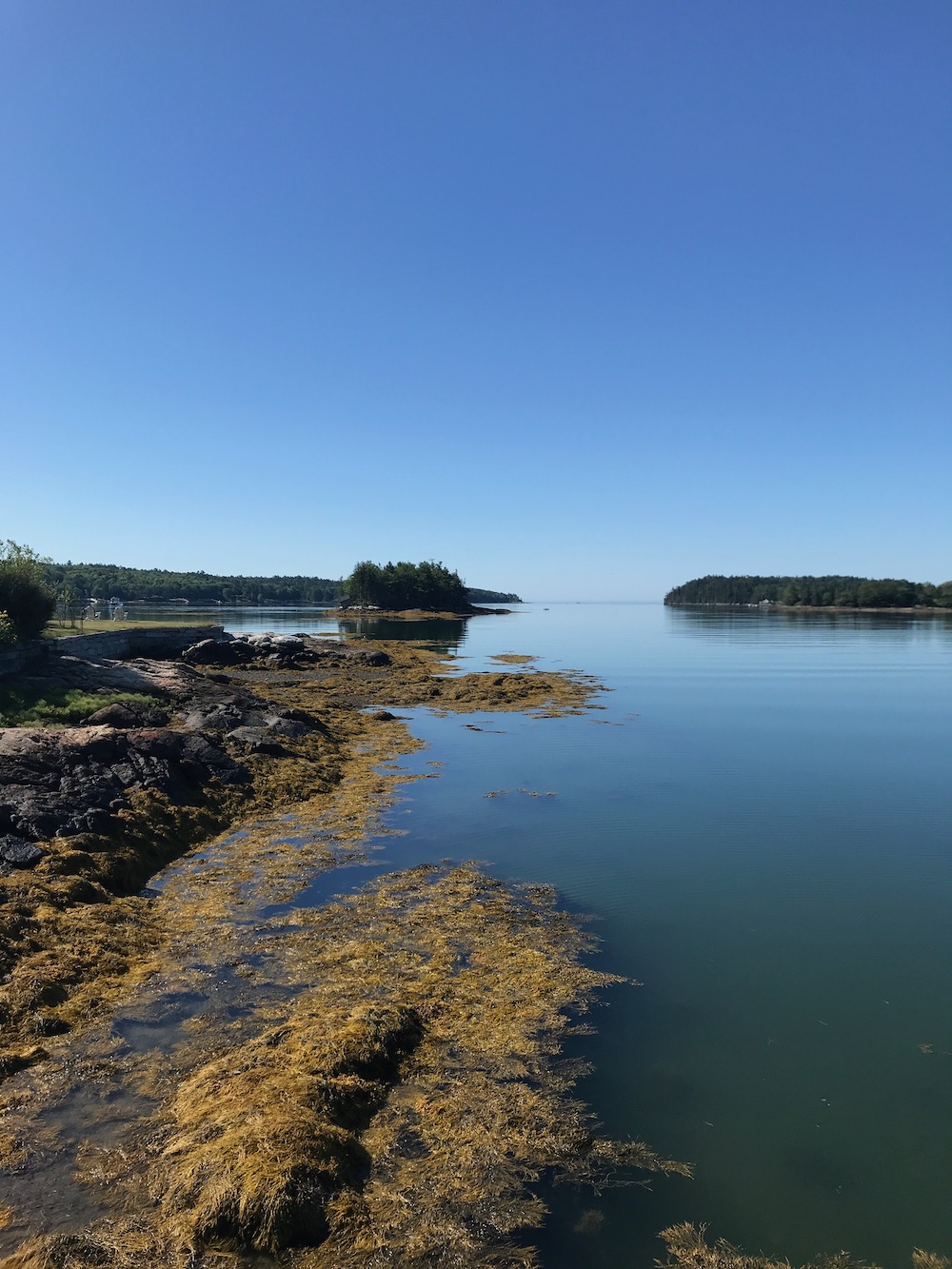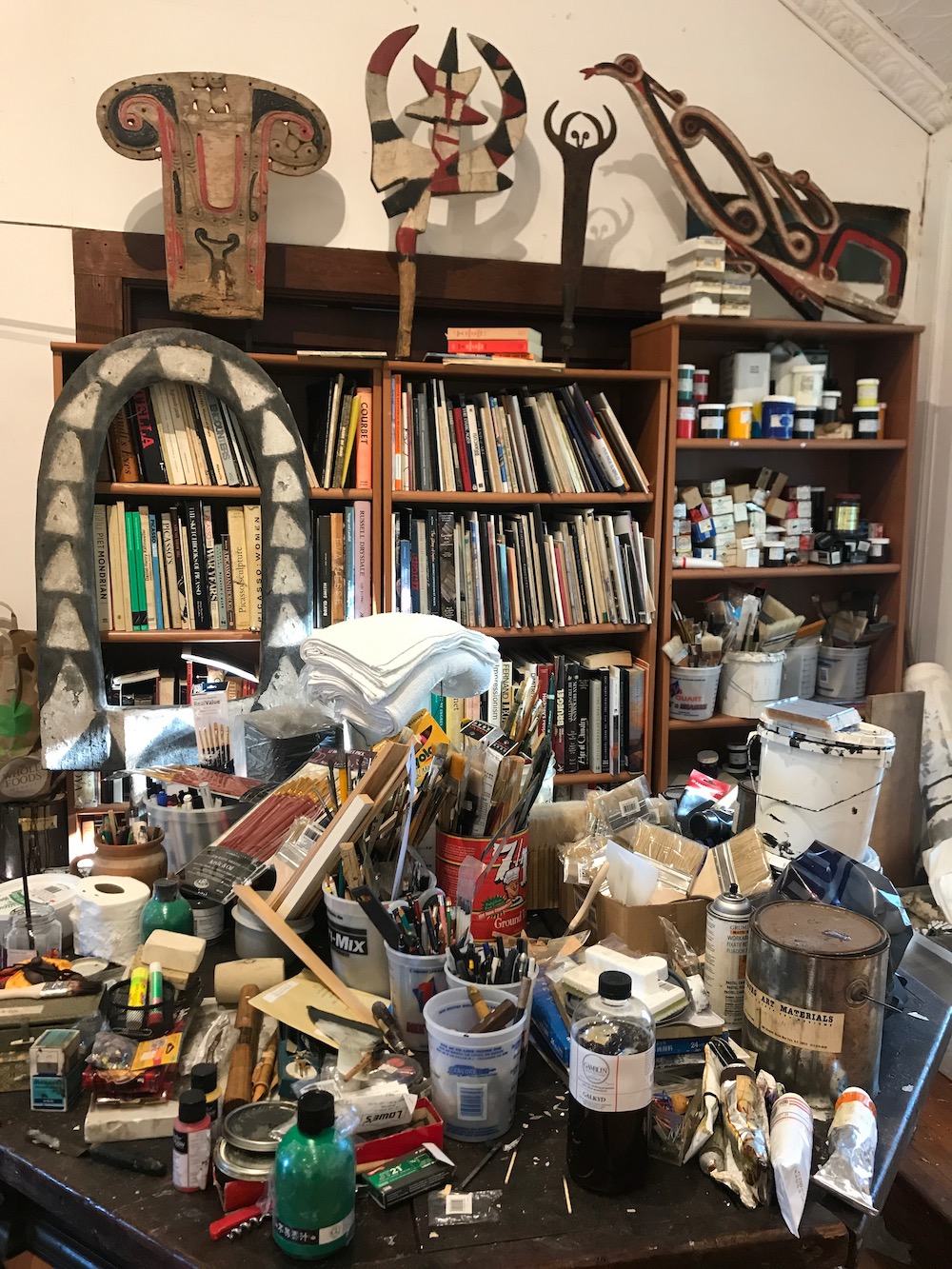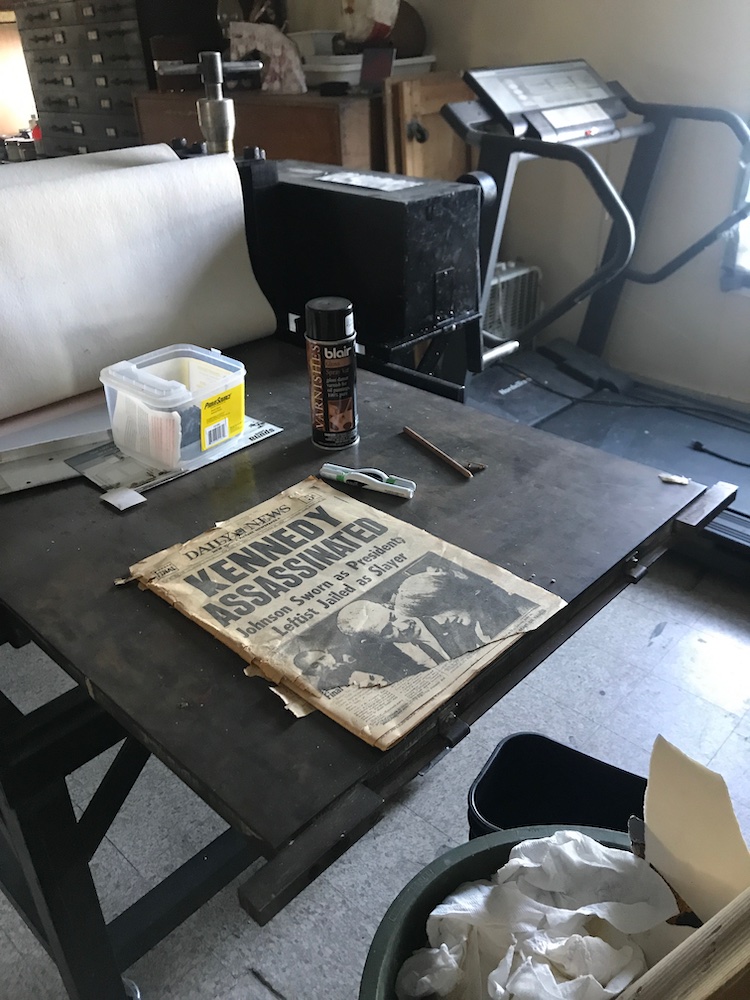- Home » Exhibition » EXHIBITION: John Walker ‘Seal Point, 2002’
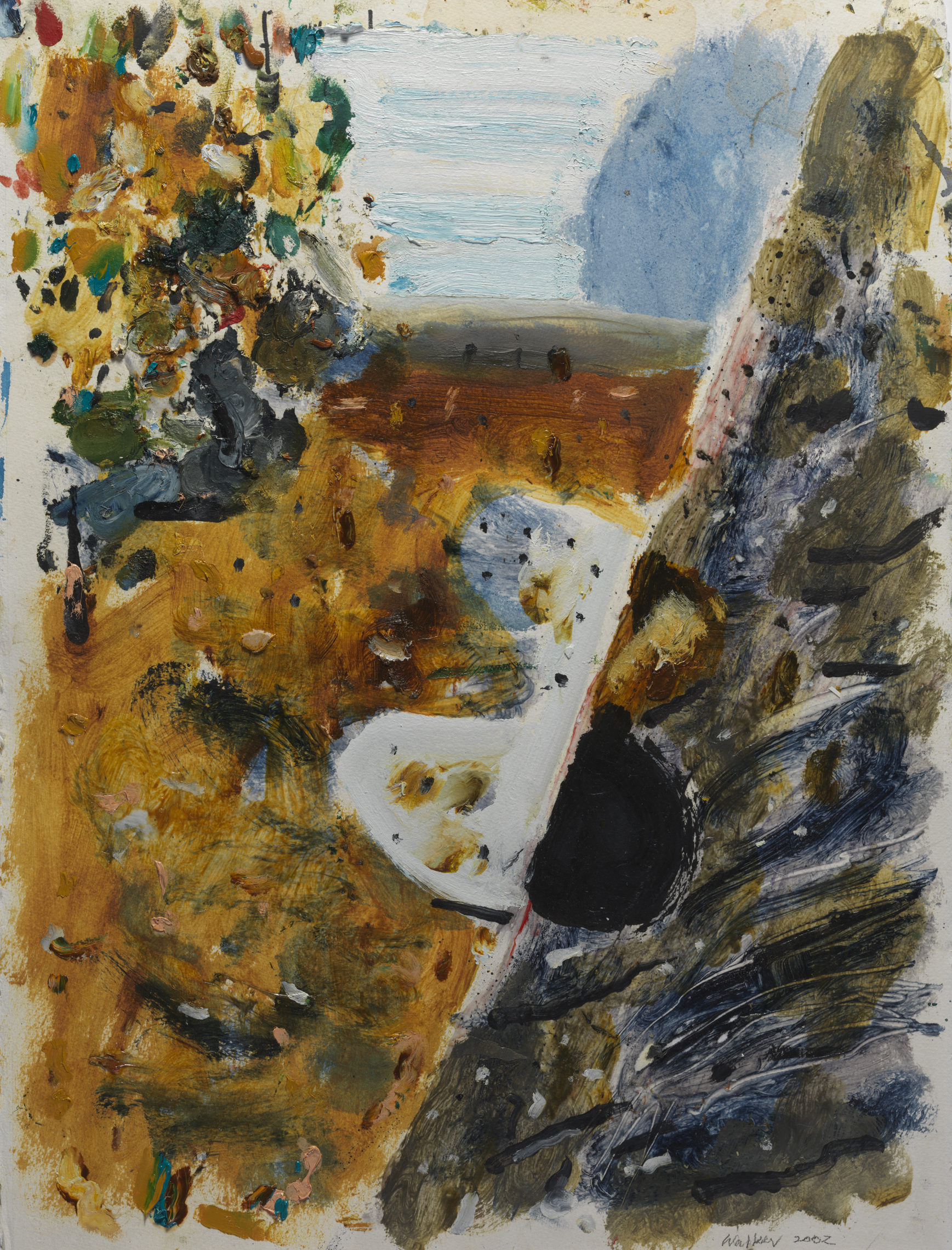
16 June – 9 July
London
For advance information and a collector’s preview please register interest:
From as early as the 1970’s Walker was one of the most influential and imitated painters working in the UK; he exhibited alongside Andy Warhol and Roy Lichtenstein, represented his country at the 1972 Venice Biennale, had extensive survey shows at both the Tate and Hayward galleries and was nominated for the Turner Prize in 1985.
Bold commitment and brave decisions mark out the turning points that have guided Walker’s life. He would not accept a management role at the Royal College of Art, instead leaving London at the height of his notoriety to seek out new lands. He moved to Australia where he had a lasting influence as Dean of the Victorian College of the Arts in Melbourne between 1982 and 1986. Meanwhile interest in his work continued to be strong in New York. He first visited in 1969 with the Harkness Fellowship and subsequently was awarded the Guggenheim Fellowship in 1981. By this time legendary gallerist Betty Parsons had found her way to his studio recognising the strength of his painterly language. It was through Parsons that Walker found Maine, taking a holiday cottage that would become his home and a teaching post at Boston University where he is still Professor Emeritus.
John Walker is a rare species, a British born internationally applauded abstract painter. He is considered one of their own by both Australia and America, and more recently China where he is visiting teacher in art at Beijing. However, a 2019 museum show with Ikon Gallery in Birmingham has started a process of reawakening within the UK for Walkers work and a repatriation in a sense of one of this countries most vaunted painters.
He has had solo exhibitions at the Museum of Modern Art in NY; The Phillips Collection in DC; The Tate Gallery, London; The Hayward Gallery in London; The Kunstverein, Hamburg; The Art Gallery of New South Wales in Sydney, Australia; and others.
His work can be found in museum collections, including The Art Institute of Chicago, Illinois; The Guggenheim Museum, New York; Irish Museum of Modern Art, Dublin; The Metropolitan Museum of Art, New York; The Museum of Contemporary Art, Los Angeles, California; Museum of Fine Arts, Boston, Massachusetts; The Museum of Modern Art, New York; National Gallery of Art, Washington, D.C.; National Gallery of Australia, Canberra; Phillips Collection, Washington, D.C.; Scottish National Gallery of Modern Art Gallery, Edinburgh; Tate Gallery, London; Victoria and Albert Museum, London, England; Whitney Museum of American Art, New York; Yale Center for British Art, New Haven, Connecticut.
About this series
Seal Point 2002 presents a snap shot into period of time and a body of work completed on a small stretch of coastline in front of Walker’s home in Maine. These works which have been held in his studio until now are being offered here for sale for the first time.
Seal Point is to Walker what Mont Saint Victoire was for Cezanne, a place he studies and observes until ‘one knows more about it than anyone else. That is what Seal Point is to me.’
They are both a carapace for the application of paint as well as singular observations of landscape at moments between the ebb and flow of tide and the rise and fall of sunlight.
Exhibited alongside are a collection of Walker’s ‘Bingo Card’ paintings. Walker was moving into his studio in Maine where he found bags of Bingo cards, likely left over from the 1950s when the building was used as a community centre. Many of them had been altered in their first use, presumably to hide the traces of what was then an illegal activity.
Measuring 7 by 5 inches which made them easy to carry back and forth from the beach, Walker used them for a period to make quick impressions of the landscape, often allowing the grids, numbers, sometimes small logos – an elephant and leaping greyhound- or cartoonish letters, to show through.
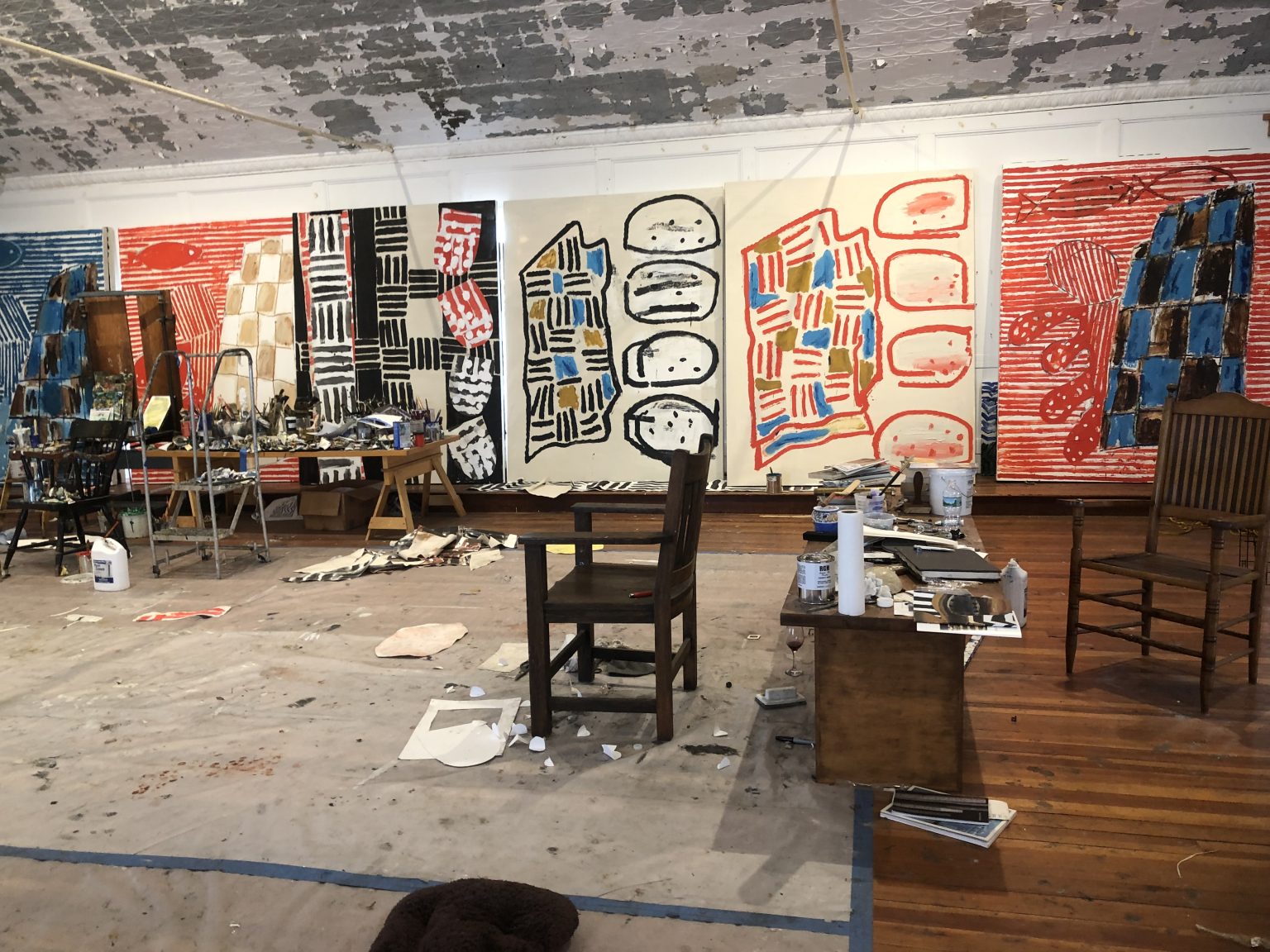
A friend who works with Sculpture and Installation said to me recently “The problem with Painting is that it has too much history”. My instantaneous reply was “That’s one of the very things that I most like about it.” I’m fairly confident John Walker’s answer would have been similar.
My first encounter with him as a student at the Royal College of Art in the late 1970s was not necessarily an easy one. His work was extraordinarily prominent and highly thought of at that time and there was barely a student who was not making pastiches of his work. I was one of the few who was not but when he saw what I was trying to do he was characteristically perceptive, helpful and sympathetic. Later he was instrumental in helping me get a Harkness Fellowship to Yale, and we still meet up from time to time.
It has always struck me as profoundly unjust that over the decades since he moved away from the UK, sometime around the mid-1980s, his work once so prominent should have vanished from sight along with him, and that a large number of younger artists were completely unaware of his practice. His work now seems as relevant as ever and about ten years ago, with the backing of Turps Banana Painting Magazine, I flew off to Boston to interview him and to try and set that situation right.
John’s reputation in the USA, where he has been living for some time now, is securely established and unquestioned. His involvement with the dilemmas of illusion and surface have always been paramount. Film critics often reference the emotional agency of depicted space in movies, seldom referenced in that way by commentators on the plastic arts. Space, or the illusion of it, has always been prominent in John’s practice and to my mind is much more relevant than the introduction of ‘namable’ subject matter or even text. The Door is perhaps a more fitting metaphor for John’s paintings than The Window, and the subject matter or text could be seen only as a possible key, nothing more, nothing less. Complexity or contradiction has never really been problematic for the poetic imagination. As the art world seems to be devolving into part of the entertainment industry, these works vastly repay any effort demanded to understand them, their context and background. This new and exciting exhibition of John’s work is long overdue.
Here follows an updated version of my interview with John, which despite some years having passed still offers many insights.
CS: One clear trait of you practice is a determination to apply the paint in varied and unexpected ways.
JW: I’ve always been interested in what you may call talking with the brush - that’s something inherent in great painting. The way the artist kind of talks himself through a space or a distinctive form. It was one of the things that worried me about a lot of my friends’ paintings, Minimalists if you like, this throwing-out of the language of the brush. It was there in the paintings I admired, that distinctive touch which you see in a Chardin for example and which makes you gasp when you see the beauty of it.
CS: Could it be said that your attention was moving away from just the act of painting, towards referencing things outside of that?
JW: Well, that’s true to an extent. I’d come to feel with the ‘collage paintings’ that they were solid enough to feel – if you hit one for example, you’d break your hand. But I suppose what I’d reverted to was that it was no longer just about force because I’d always believed the same of say a Vermeer painting that if it fell on you it could kill you because it’s so finitely structured. There’s a dialogue going on all the time and even though I thought the collage paintings were going well what was missing in the paintings was ‘going back to air’ – how do you paint air? I was beginning to feel I’m not doing the things I care about. I was looking at Rembrandt’s portraits for example – how do you paint the space around a form?
CS: Would it be fair to say that in the past you were interested in the ‘whole painting’ as an image, whereas now you are becoming more interested in an image ‘within’ the work?
JW: To an extent it was: “how can I find a form which I can place with air around it?”
CS: I seem to remember reading years ago that you’d quoted Picasso saying that he wanted his paintings to stop just this side of abstraction and that you wanted your paintings to stop just this side of figuration.
JW: One of the most inspiring things I ever read was by Malevich, who, when asked what his ambition was, said to imbue a square with feeling. Somehow that square had to act figuratively – not abstractly, even though it was an abstract form. It’s the same with Rothko – you’re not just seeing a rectangle, those forms somehow act figuratively on you. Someone who doesn’t do it so well is Barnett Newman. If he hadn’t called those paintings Stations Of The Cross they would just be black and white paintings.
CS: Some of the dialogues, which have unfolded in your work over the years have an affinity with Guston – the reintroduction of ‘nameable’ imagery for example. He seemed to have had a road to Damascus conversion, whereas your developments seem to have evolved more slowly.
JW: It’s very much a narrative thing – there’s a lot of narration in Guston. Even though I met him several times it’s quite hard to talk about him. The language or the ‘touch’ of paint is always the most important, and some times the subject matter is just a kind of filler.
CS: Would you agree that the forms in your work are usually defined by the edges of shapes rather than by the brush marks modeling them? The marks seem more to animate the shapes rather than model them?
JW: I spend a lot of time trying to work out where things meet – where form meets space. I spend a lot of time trying to activate that area. That’s where drawing is. I love looking at Albers – the precision of where the colours meet creates drawing.
CS: Let’s talk about the way you have represented space in your paintings. Very often the forms or planes lie parallel to the picture surface.
JW: Everyone seems to have his or her own definition of what the picture plane is. I suppose I wanted to place the forms in front of the picture plane. I am thinking of one particular Cezanne self-portrait, where he established the picture plane very early on in an area just behind the ear, then, later on, everything else has a discussion with that part. There is a kind of building in and out of the picture plane. The painting in the Phillips Collection in Washington seems to exist in the space between you and the surface. The painting is about four feet away but Cezanne is only about two and a half feet away.
CS: I suppose what I mean is, in say the Alba paintings, the forms and the areas around them are upright as opposed to your paintings, which have a recessive sloping surface. From my own experience I know it is easier to get the marks to lie down and fuse with the forms when they are parallel.
JW: Well, that’s the problem with landscape painting – you find that things move away from you pretty quickly. The thing is you are always making a painting. There’s a physical difference between what is a ‘view’ and a ‘painting’. Most of those paintings were actually started outside in the landscape, then when I had something there I brought them in and had a dialogue with the work, then took them out again and to see if they ‘fitted’, to see if they were then actually part of the landscape. They don’t have to look like it.
CS: Are they based on a specific area?
JW: Very much so. I’ve been going up to this area, where I have a studio in Maine, over many years, and it really happened about the time I had a breakdown and I didn’t really know where I was going. I found this cove where all the shit came in out of the ocean. When the tide went there was all this mud and it fitted into a group of paintings where mud was the central theme – homage pictures to my father who fought in the First World War. It took a long time but I suppose what I wanted was for people to be able to say I knew more about this spot than anyone else in the world. Cezanne knew more about Mont Sainte-Victoire than anyone else, and I‘ve got my little piece of mud! It changes all the time, every time the tide rolls in or out.
CS: It coincided with a difficult period in your life?
JW: Yes, there was a period of about eighteen months when I just could not work. The landscape refreshed me and helped me to come back.
CS: Tell me about the introduction of text into the paintings.
JW: It came at first from a drawing my daughter had made of a birthday card which included the text For You, and then I made a big painting, which I still think well of, with those words on it. Then it grew a little bit and there’s a whole series of paintings somewhere of birthday cards.
CS: That relates to you not wanting to exclude anything from paintings.
JW: Yes, I just don’t want those rules.
CS: I’ve found a quote from way back that says, more or less, you don’t like maximum impact paintings, but prefer ones that reveal themselves more slowly. What was the context for that?
JW: That’s a really early statement, from when I was a very young man. There was a time when, for a while, I found my art being exhibited alongside Warhol and Lichtenstein – all that wham-bam stuff. I felt my work was really not about the same thing at all, which in some sense forced me into a kind of retreat.
CS: What about Drawing and printmaking – you’ve done a lot of both. How do they fit in with the painting?
JW: Usually when I draw its to check the painting out. I don’t want to just rely on my eye and an immediate response - I want to try to visualise more, to internalise. To see how accurate the painting is. Did I really achieve the placing of forms I intended? I see the drawing as a confirmation, mostly after the painting. I found myself going out with watercolours into the landscape. I don’t need a camera. I want to feel I can paint anything. To me that’s one of the definitions of what a good artist is. Everything is available.
Colin Smith in conversation with John Walker, revisited and edited March 2019
